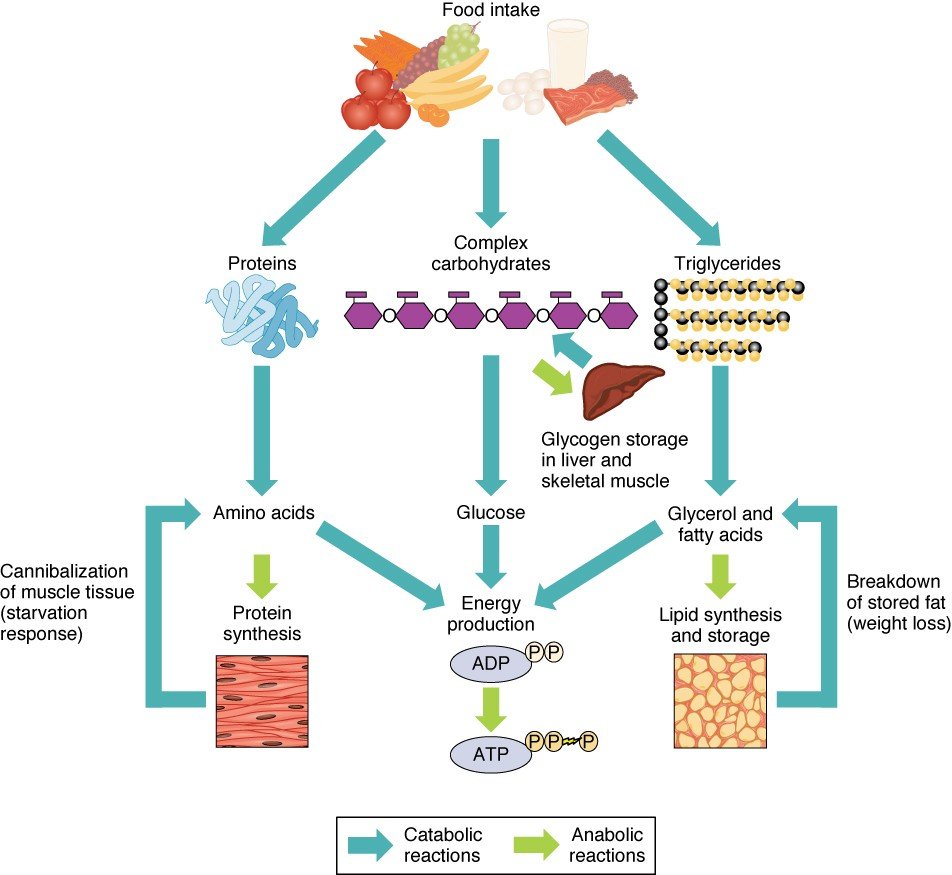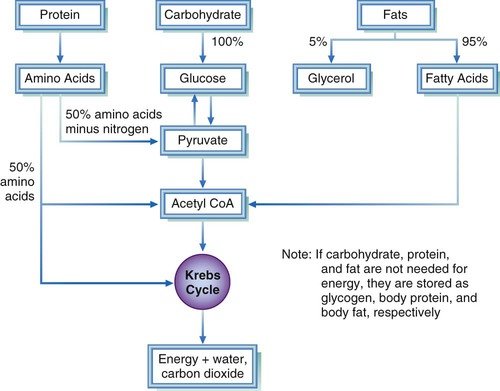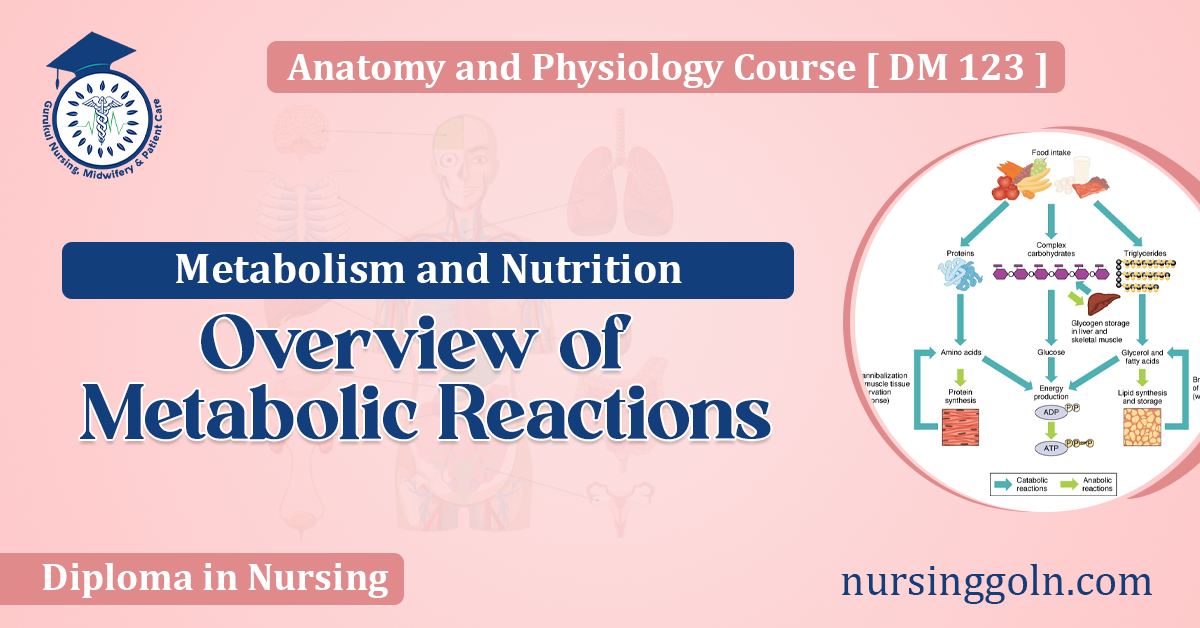Today our topic of discussion is ” Overview of Metabolic Reactions “. Metabolism refers to the complex network of chemical reactions that occur within living organisms to sustain life.
It encompasses all the biochemical processes that involve the conversion of nutrients from our food into energy and the building blocks needed for growth, reproduction, and maintaining healthy cells and tissues. These metabolic reactions are essential for the production of ATP, which is the energy currency of the cell, as well as for the synthesis and breakdown of biomolecules.
Overview of Metabolic Reactions : Metabolism and Nutrition
Fundamentals of Metabolic Pathways
Metabolic reactions can be categorized into two fundamental types: anabolic and catabolic reactions. Anabolic reactions involve the synthesis of complex molecules from simpler ones, often requiring energy, whereas catabolic reactions involve the breakdown of complex molecules into simpler ones, releasing energy in the process.
Anabolic Reactions:
- Biosynthesis of Cellular Components: This includes the synthesis of nucleic acids for DNA and RNA, proteins from amino acids, and complex lipids from fatty acids and glycerol.
- Energy Storage: Anabolic pathways also help in storing energy; for example, the synthesis of glycogen from glucose.
- Growth and Repair: These pathways are essential for cell growth, repair, and the maintenance of body tissues.
Catabolic Reactions:
- Energy Release: The primary catabolic pathway is the breakdown of glucose during glycolysis and the citric acid cycle, which releases energy.
- Digestion: This includes the breakdown of proteins into amino acids, lipids into fatty acids and glycerol, and carbohydrates into simple sugars.
- Detoxification: The liver often engages in catabolic metabolism to detoxify various substances.

Enzymatic Control of Metabolic Reactions
Each metabolic reaction is facilitated by a specific enzyme. Enzymes act as catalysts that increase the rate of virtually all the chemical reactions within cells. They are vital in regulating metabolic pathways by enabling the stepwise transformation of substrates into products with incredible specificity and speed, without being consumed in the process.
Nutrition and Metabolism
Nutrition provides the substrates for metabolism. The primary nutrients include carbohydrates, proteins, fats, vitamins, and minerals. These nutrients are metabolized to provide energy and the raw materials for biosynthesis.
Carbohydrates: The primary source of energy in most diets. They are broken down into glucose, which enters glycolysis, providing ATP and precursors for other metabolic pathways.
Proteins: They supply amino acids, which can be used to synthesize new proteins or can be deaminated for use in energy production.
Fats: Triglycerides are hydrolyzed into fatty acids and glycerol. Fatty acids undergo beta-oxidation to acetyl-CoA, which can enter the citric acid cycle for ATP production or be used in the synthesis of ketone bodies.
Vitamins and Minerals: These are not energy sources but are essential as coenzymes or cofactors for many metabolic reactions.

Energy Metabolism
Adenosine Triphosphate (ATP): ATP is the energy currency. Energy from catabolic reactions is used to synthesize ATP from adenosine diphosphate (ADP) and inorganic phosphate. This ATP is then used to power various cellular processes, including mechanical work, transport work, and chemical work.
Glycolysis: The initial stage of carbohydrate metabolism, where glucose is converted into pyruvate, producing a net gain of two ATP molecules and reducing equivalents in the form of NADH.
Citric Acid Cycle (Krebs Cycle): This cycle oxidizes acetyl-CoA to CO2 and captures the energy in the form of NADH, FADH2, and ATP.
Oxidative Phosphorylation: The process by which the energy from NADH and FADH2 is used to produce ATP in the mitochondria. This is where most ATP is generated.

Integration of Metabolism
Metabolism is not a set of isolated pathways; it is highly integrated, and regulated to meet the needs of the organism. For example, in the fed state, glucose levels are high, and the liver converts excess glucose into glycogen and triglycerides. In the fasting state, glycogen is broken down into glucose, and fatty acids are released from adipose tissue to supply energy.
Metabolic Rate and Energy Balance
The metabolic rate is the rate at which the body uses energy. It is influenced by factors such as age, sex, muscle mass, and physical activity. Maintaining energy balance involves matching energy intake with energy expenditure. Imbalances may result in weight gain or loss.
Hormonal Regulation
Metabolic reactions are regulated by hormones such as insulin, glucagon, epinephrine, and cortisol. Insulin promotes glucose uptake and storage, while glucagon mobilizes stored energy in response to low blood glucose levels.
Metabolic Disorders
Disruptions in metabolic pathways can lead to disorders such as diabetes mellitus, obesity, metabolic syndrome, and inborn errors of metabolism like phenylketonuria (PKU). These conditions can have significant health implications.
Nutritional Requirements
Nutritional needs vary by age, sex, activity level, and overall health. Dietary guidelines provide recommendations for macronutrient and micronutrient intake to promote health and prevent chronic diseases.

Conclusion
In summary, metabolic reactions are integral to life, converting nutrients into energy and building blocks for the body. The interplay between metabolism and nutrition is critical in understanding health and disease. A balanced diet tailored to an individual’s needs, combined with regular physical activity, supports optimal metabolic function. By understanding the basics of metabolism, we can make informed choices about our health and nutrition.
Understanding the intricate dance of metabolic reactions gives us a clearer insight into the essence of biological life. As researchers continue to unveil the mysteries of metabolism and nutrition, we edge closer to a world where personalized nutrition and metabolic healthcare can help us lead healthier and more vibrant lives.
Read more:
